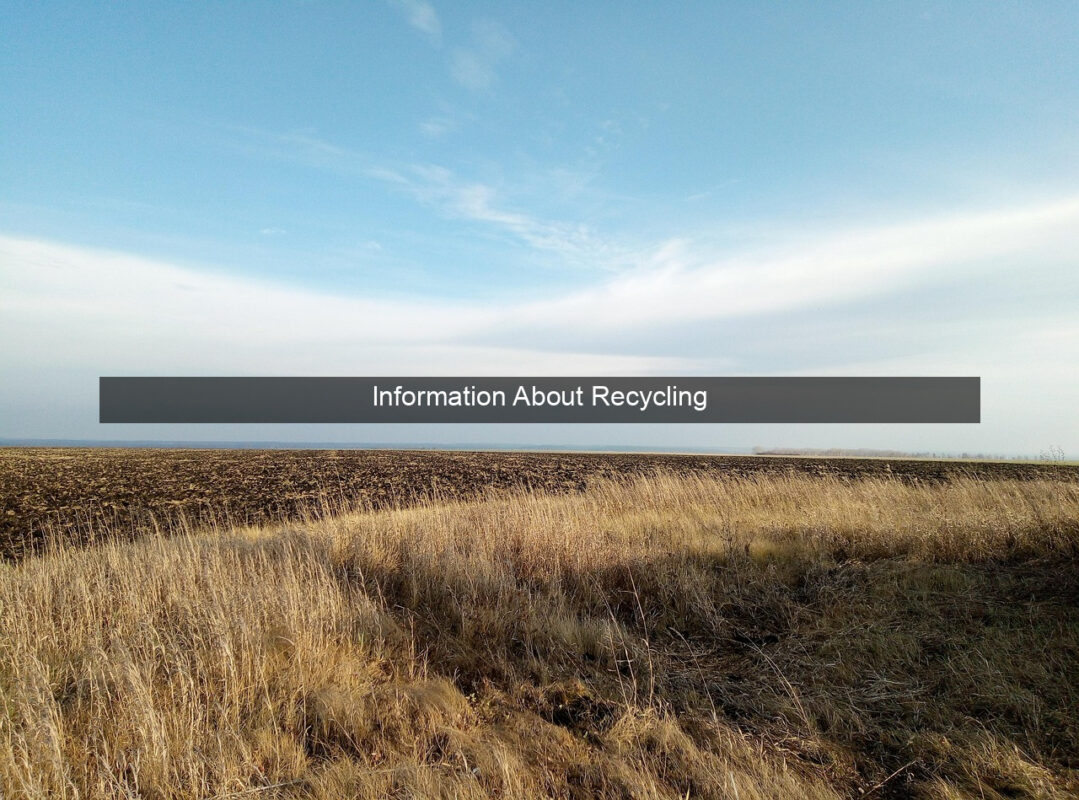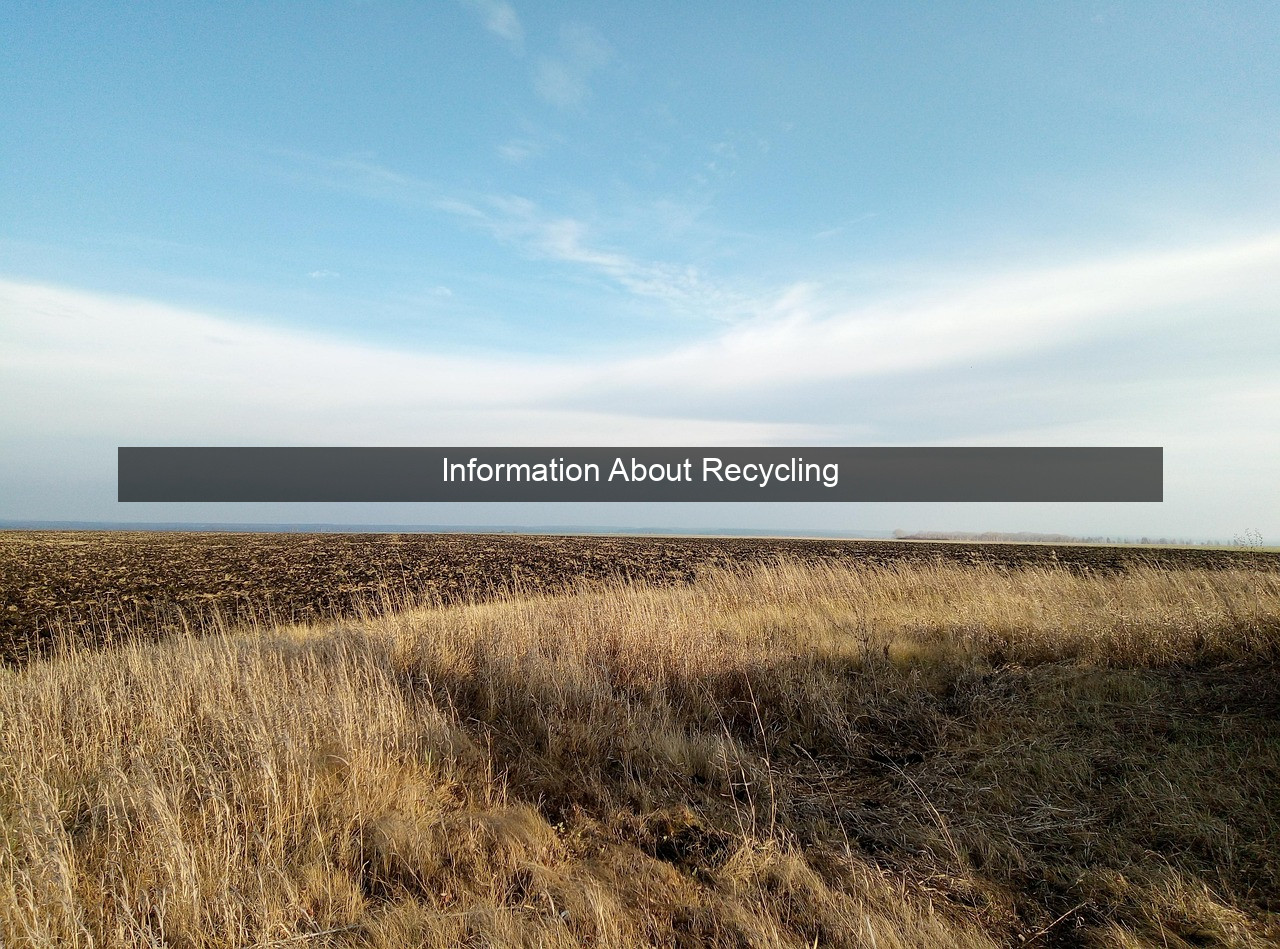Information About Recycling

- Information About Recycling
- The Importance of Recycling
- Conserving Natural Resources
- Reducing Landfill Waste
- Minimizing Pollution
- The Recycling Process
- Collection and Sorting
- Processing and Manufacturing
- The Role of Consumers
- Commonly Recycled Materials
- Paper and Cardboard
- Plastics
- Glass and Metal
- The Future of Recycling
- Technological Advancements
- Increased Public Awareness
- Government Initiatives
- Conclusion

Our planet is drowning in waste. Mountains of discarded materials pile up, polluting our land, water, and air. This alarming reality underscores the urgent need for effective waste management solutions. Recycling emerges as a crucial strategy in this fight, offering a powerful tool to combat pollution, conserve resources, and promote a sustainable future. It’s not just about tossing a can into a blue bin; it’s about actively participating in a global effort to protect our environment. Understanding the intricacies of recycling, from its multifaceted benefits to the specific materials we can recycle, empowers us to make informed choices and contribute meaningfully to a healthier planet. This article delves into the world of recycling, exploring its significance, processes, and impact on the environment. Learn how you can become a more effective recycler and play your part in creating a more sustainable world for generations to come. By embracing responsible waste management practices, we can transform our relationship with the environment and pave the way for a cleaner, greener future. Recycling is not merely a trend; it’s a necessity.

The Importance of Recycling
Conserving Natural Resources
Recycling plays a vital role in conserving precious natural resources. By reusing materials, we reduce the need to extract virgin resources from the Earth. This lessens the environmental impact associated with mining, logging, and other resource extraction activities.
Furthermore, recycling helps to preserve biodiversity and protect ecosystems. By reducing our reliance on virgin materials, we minimize habitat destruction and the disruption of delicate ecological balances.
The conservation of natural resources through recycling is essential for ensuring a sustainable future for generations to come. It allows us to meet our present needs without compromising the ability of future generations to meet their own.
Reducing Landfill Waste
Landfills are overflowing with waste, contributing to soil and water contamination. Recycling significantly reduces the amount of waste sent to landfills, mitigating these negative environmental impacts.
By diverting waste from landfills, we also conserve valuable land space. This is particularly important in densely populated areas where land is a scarce resource.
Reduced landfill waste translates to a cleaner and healthier environment for everyone. It minimizes the release of harmful greenhouse gases and protects our communities from pollution.
Minimizing Pollution
Recycling helps to minimize pollution in several ways. It reduces air pollution from incinerators and water pollution from landfill leachate.
The manufacturing process for recycled materials often requires less energy than producing goods from virgin resources. This translates to lower greenhouse gas emissions and a smaller carbon footprint.
By choosing to recycle, we actively contribute to cleaner air and water, promoting a healthier environment for ourselves and future generations.
The Recycling Process
Collection and Sorting
The recycling process begins with the collection of recyclable materials. This can involve curbside pickup programs, drop-off centers, or designated collection bins in public spaces.
Once collected, materials are transported to recycling facilities where they are sorted based on their type. This sorting process is crucial for ensuring that materials are properly processed and recycled.
Effective sorting relies on public awareness and participation. Understanding which materials are recyclable and placing them in the correct bins streamlines the process and maximizes recycling efficiency.
Processing and Manufacturing
After sorting, recyclable materials undergo various processing techniques to prepare them for manufacturing. This may involve cleaning, shredding, melting, or other processes depending on the material.
Processed materials are then used as raw materials in the manufacturing of new products. This closes the loop and creates a circular economy where resources are continually reused.
The manufacturing of products from recycled materials often consumes less energy and resources than using virgin materials, further reducing the environmental impact.
The Role of Consumers
Consumers play a crucial role in the success of recycling programs. By properly sorting and disposing of recyclable materials, we ensure that they can be effectively processed and reused.
Supporting businesses that use recycled materials in their products creates demand for recycled goods and encourages further recycling efforts.
Educating ourselves about local recycling guidelines and actively participating in recycling programs empowers us to make a positive impact on the environment.
Commonly Recycled Materials
Paper and Cardboard
Paper and cardboard are widely recycled materials. These materials can be recycled multiple times, reducing the need for new trees to be cut down.
Recycling paper and cardboard conserves forest resources, protects biodiversity, and reduces deforestation.
Ensure that paper and cardboard are clean and dry before placing them in the recycling bin.
Plastics
Many types of plastic are recyclable, although the specific types accepted vary by location. Check your local recycling guidelines for details.
Recycling plastic reduces plastic waste in landfills and oceans, protecting marine life and ecosystems.
Properly sorting and cleaning plastic containers before recycling is essential for ensuring they are processed effectively.
Glass and Metal
Glass and metal are highly recyclable materials that can be recycled infinitely without losing quality.
Recycling glass and metal conserves energy and reduces the need to mine new resources.
Ensure that glass and metal containers are empty and rinsed before placing them in the recycling bin.
| Material | Recycling Process |
|---|---|
| Paper | Pulping and Reprocessing |
| Plastic | Melting and Reshaping |
| Glass | Crushing and Melting |
| Metal | Melting and Refining |
- Reduce your consumption
- Reuse items whenever possible
- Recycle materials properly
The Future of Recycling
Technological Advancements
Technological advancements are constantly improving the efficiency and effectiveness of recycling processes.
New technologies are being developed to recycle a wider range of materials and improve the quality of recycled products.
These innovations are crucial for creating a more sustainable and circular economy.
Increased Public Awareness
Growing public awareness about the importance of recycling is driving increased participation in recycling programs.
Education and outreach efforts are empowering individuals to make informed choices about waste management.
This increased awareness is essential for creating a culture of recycling and sustainability.
Government Initiatives
Government policies and initiatives play a crucial role in promoting recycling and waste reduction.
Regulations and incentives can encourage businesses and individuals to adopt sustainable practices.
Government support is essential for creating a comprehensive and effective recycling infrastructure.
Conclusion
Recycling is a vital component of sustainable living. By understanding the importance of recycling and actively participating in recycling programs, we can contribute to a healthier planet. Embracing recycling as a way of life empowers us to make a positive impact on the environment and create a more sustainable future for generations to come. Recycling is not just an option; it’s a responsibility.
What are the main benefits of recycling?
The main benefits of recycling include conserving natural resources, reducing landfill waste, and minimizing pollution.
What materials can be recycled?
Commonly recycled materials include paper, cardboard, plastics, glass, and metal. Check your local recycling guidelines for specific details.
How does recycling help the environment?
Recycling helps the environment by reducing pollution, conserving resources, and protecting ecosystems.
What is the recycling process?
The recycling process involves collection, sorting, processing, and manufacturing.



